The aeronautical engine, the revolutionary invention.
A very special greeting, to all those who follow my contributions to the community, I had not done it before, but I want to thank you all for your support, all those who have given their vote of confidence, I am truly grateful, it has been of great help, in the situation in which we currently live in Venezuela, to the curators, and to all those who give their upvotes in favor of my work, a million thanks, of heart they are appreciated.
Now to get into the subject, I want to talk about aeronautics or airplane engines today. Almost everyone at some point in our lives, we had to board a plane, maybe some do not like it as much as others, but the truth is that the plane has been an invention that has revolutionized our lives, thanks to the travel agency in a super short time to places that are very, very far from our origin, and is that since 1903, when the Wright brothers, the first airplane, things have been evolving for good.
And there have been unfortunate casualties, in terms of accidents due to failure and damage, but what can not be questioned is the fact that the plane has revolutionized our lives.
In today's topic I want to talk a little about what is the aeronautical engine, which without a doubt, is the most important part of the plane, and the most complex, I hope you like it.
Let's start by defining what is an aeronautical engineer.
An aeronautical engine or aviation engine is one that is used for the propulsion of aircraft by generating a thrust force.
Aviation engines or aeronautical engines are those that are used for the propulsion of aircraft or airplanes by generating a force that moves the aircraft or aircraft forward. Its fundamental difference with the motors of automobiles or ships resides fundamentally in its structure is made with more resistant or compact materials and at the same time lighter, the reason why it expensive its production. This is based on the 2nd and 3rd Newton's law.
2nd Law: "The increase in the amount of movement is equal to the impulse of the applied force".
3rd Law: "To every action corresponds an equal and opposite reaction"
What does all this mean? The second law what it expresses, basically, is this:
m • dV = F • dt this can be reordered like this: m • dV / dt = F, which is the classical equation of m • a = F, that is, the force that you apply to a body is equal to its mass by the acceleration that develops when applying said force.
The third law what it means is that when you apply a force to something, that something applies to you an equal force in the opposite direction. The typical example is that of the wall: when you push a wall, you go backward. The wall exerts on you a force equal to the one applied to you, in the opposite direction.
What does this mean?
Let's apply these two laws to an airplane engine and you will understand what I mean. The engine sucks a mass of air and accelerates it. When the air leaves behind the engine, it leaves accelerated, right ?. Look at the equation above. If we have accelerated a mass of air, this means that the engine is applying a force to the air. And what happens according to the third law? That the air applies to the engine equal force and in the opposite direction. That is to say, the air is expelled backward and the engine is forward. There we have the operation of a jet engine.

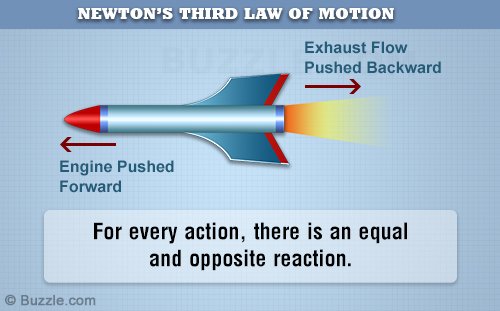
Aeronautical or aviation engines are divided into three groups:
-Alternative Engines.
-Reaction engines.
-Rocket engines.
Let's develop and understand how they work.
4-stroke engine
The function of the engine is to transform the heat energy of the fuel into mechanical energy.
The alternative aviation engine is formed by a series of cylinders where the air-fuel mixture is compressed and the mixture ignites.
This mixture is previously prepared in a device called a carburetor or in an injection system.
The 4-stroke engine, internally is composed as follows:
1.-Cylinder head: The cylinder head is the upper part of the engine, where the cooling fins are located and in which the spark plugs are threaded and the valves are coupled.
2.-Spark plug: It is responsible for generating the spark to ignite the mixture. In aviation engines, there are 2 spark plugs per cylinder. The fact that it has 2 spark plugs is for security measures, in case a spark plug fails the next one it can replace.
3.-Cylinder: The cylinder is made of steel and internally has a very strong Chrome-Nickel coating. And it has to be necessarily strong, due to the great force it has to endure inside the engine, and the high temperatures.
4.-Piston: The piston or piston has the shape of an inverted cup and moves inside the cylinder. The piston is attached to the crankshaft by the connecting rod.
5.-Crankshaft: The crankshaft is responsible for transforming the reciprocating movement of the pistons in rotary motion.
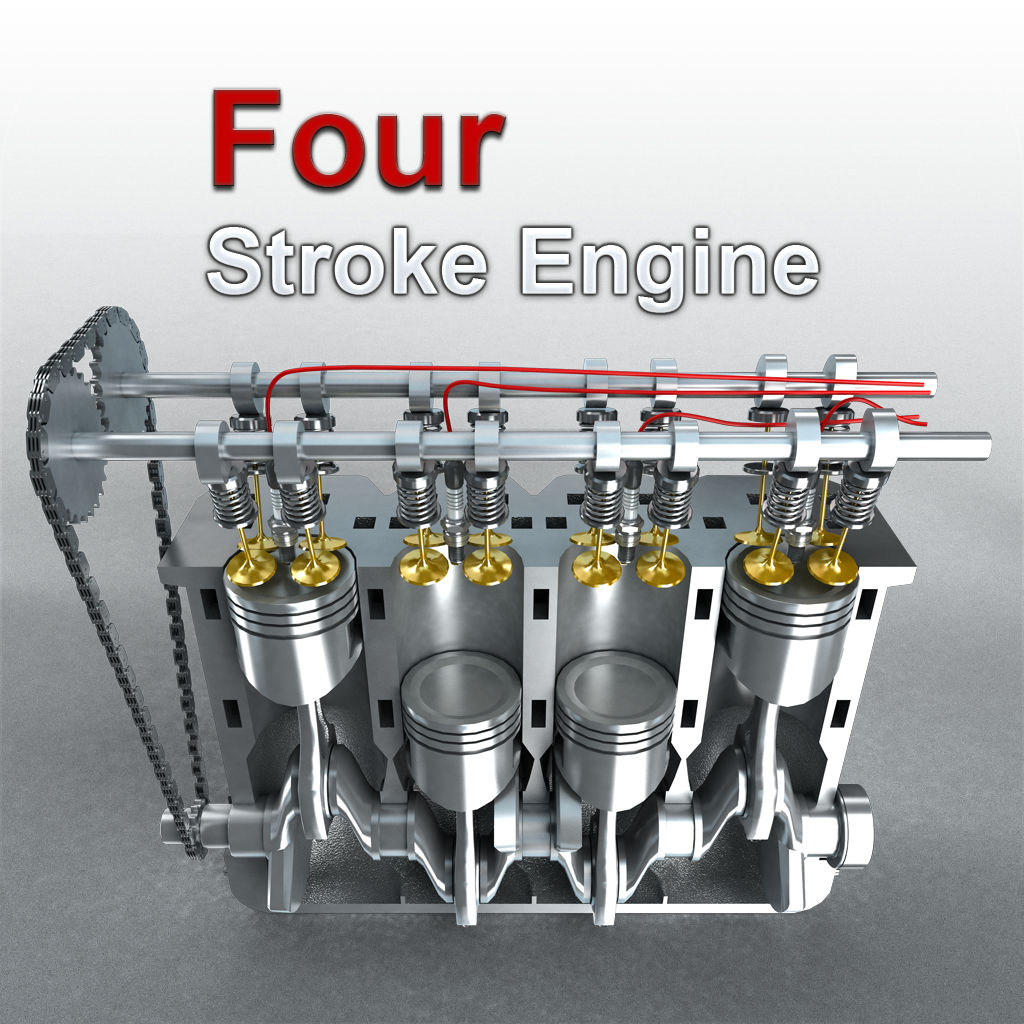
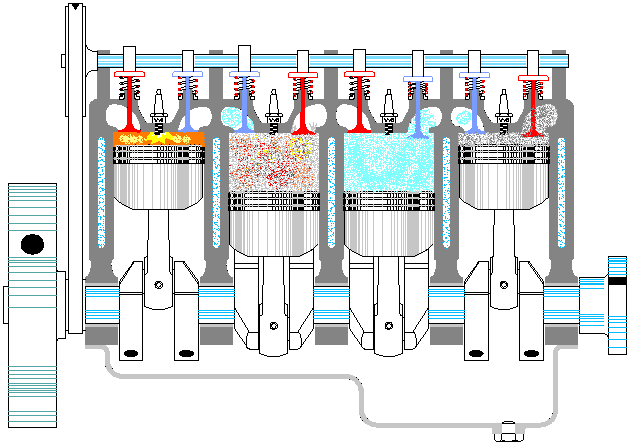
As far as the internal operation of the 4-stroke engine is concerned, this cycle is told 4 times, by the way in which it makes its internal journey.
The displacement of the piston in the cylinder is done in four phases or stages known as the Otto Cycle, which is: intake, compression, explosion-expansion, and exhaust. In the first two times the mixture is aspirated and compressed, with enough time to perform a good carburation and combustion of the mixture; At the time of explosion, a transformation of the energy, provided by the fuel, takes place in mechanical work and, during the escape time, the waste gases and the excess heat that has not been transformed into mechanical work are discharged to the outside. Of the four times that make up the cycle, only the time of expansion does the useful work.
Reaction engines
The jet engine is based on Newton's third law (Law of action/reaction).
In this case, the action would be the large mass of air expelled by the engine and this causes a force of equal intensity but in the opposite direction that is the reaction and that is what provides the thrust to the plane.
This third Law of Newton can be checked simply by inflating a balloon, we leave the mouthpiece untied and releasing it produces the exit at a great speed of the air, and consequently, the balloon is propelled in the opposite direction.
With the generic name of reaction, engines are designated those types of engines in which the propulsion is performed by reaction of a mass of gases, coming from some
combustion chambers, which go out in the opposite direction to the march of the animated plane of a great speed.
The air enters the engine through two annular entrances, equipped with filters to prevent dust or any foreign matter in the engine. the compressor takes it, which, helped by the kinetic energy of the air, it elevates the Pressure. This turns out to be, at the exit of the diffuser, of an order of 3 to 4 kg / cm2, according to the type of motor. In the figure the compressor is of the centrifugal type with two active faces, classic in "Rolls-Royce" engines; They are also used in other classes. In "Havilland Goblin" engines the compressor is also centrifugal, but working for only one / face The multi-step axial compressor is also used, from eight to twelve, usually). This compressor it was used almost exclusively on motorbikes Germans, and there is a day that the English use ("Metro Vick") and the Americans ("Westinghouse"), and it seems that it's the guy who's will tend in the future, taking into account its great performance to the large air expenses with which these engines work. We will insist on this issue when we study especially the compressors.
The air reaches the combustion chambers, arranged symmetrically around the motor and in a variable number (nine in the figure).The air, when entering, collides with some fins that make a turn, causing turbulence to improve the combustion.
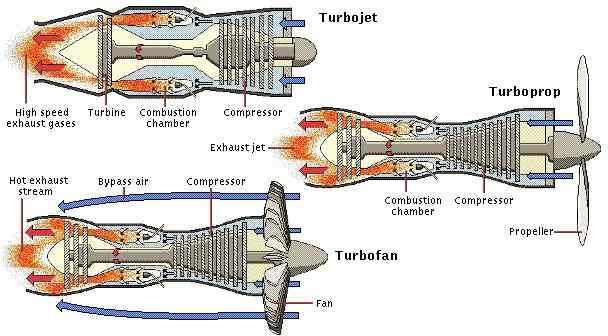
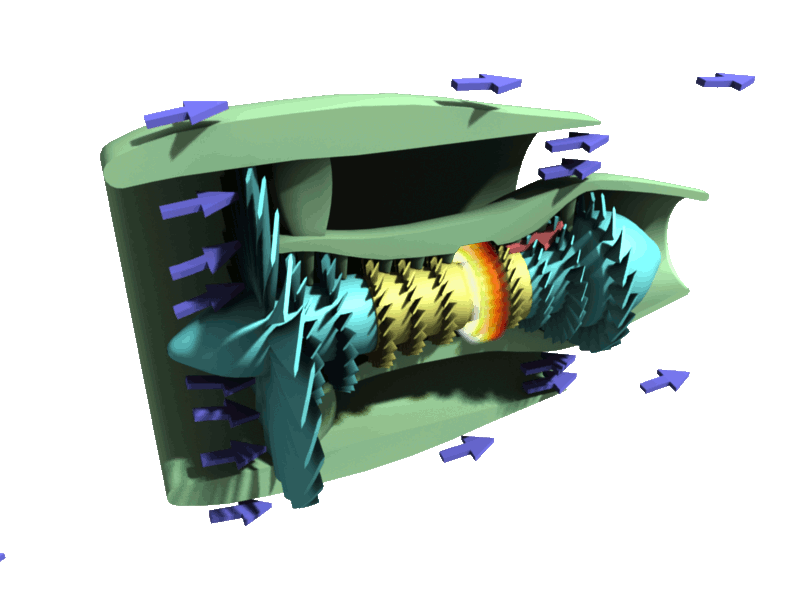
Rocket engines
The rocket engine is the most powerful engine known and its weight/power ratio makes it the ideal engine to be used in spacecraft. There are several types within the industry of missiles, launchers and space vehicles.
It seems that the rocket motors every day have more prominence, as proof of this we could highlight the incipient space tourism industry, which has ceased to be an unattainable dream to become a reality whose commercial future is being valued and that has led to all those who have been interested, and have been able to allow, to fly over the outermost layers of the atmosphere.
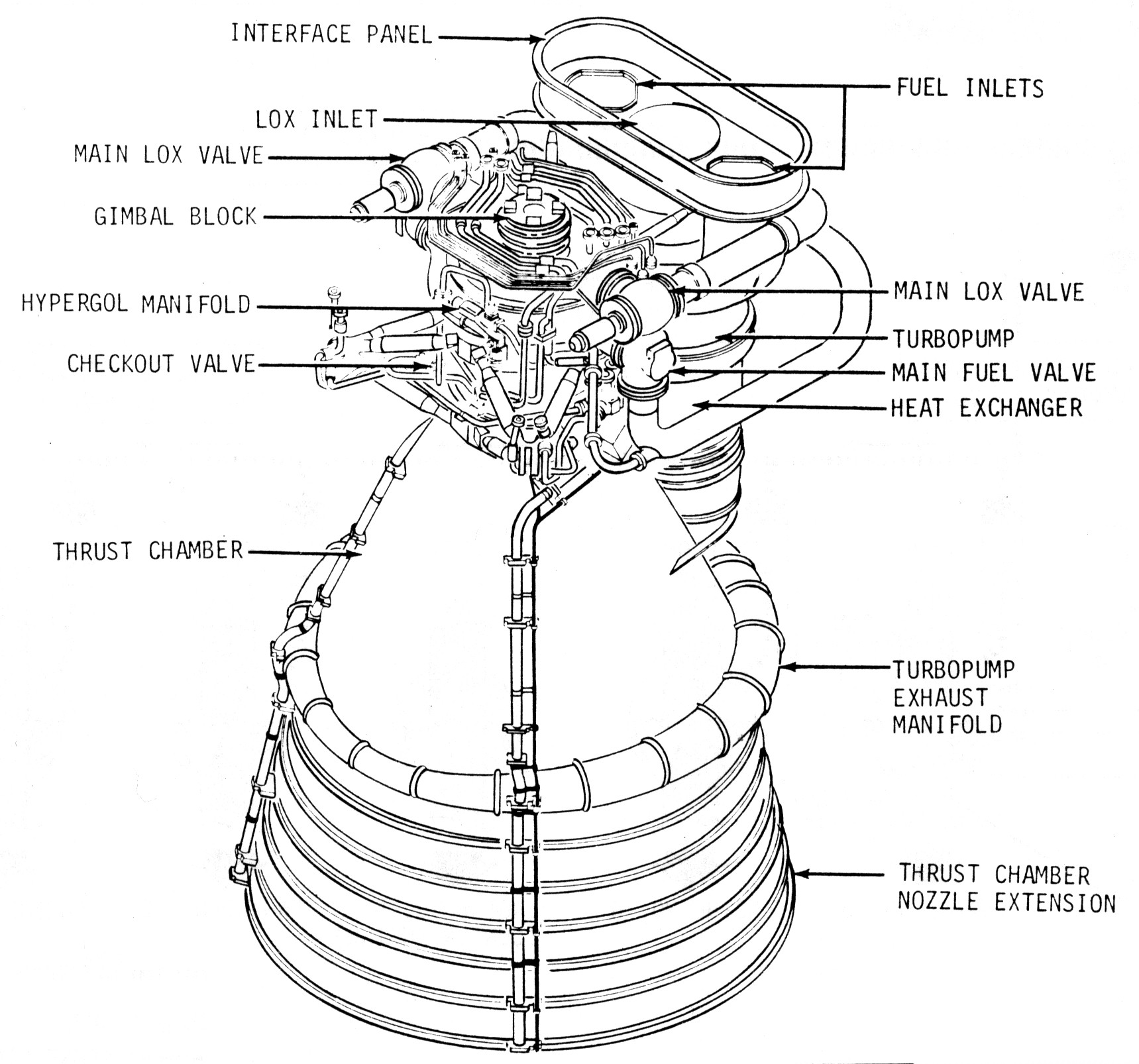
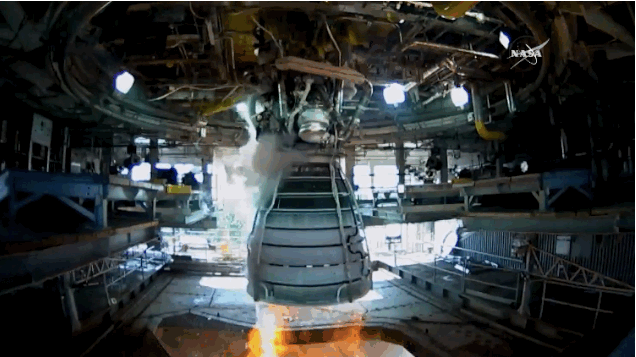.gif)
The truth that this post, is only a small introduction, of the theme, of the different types of aeronautical or aviation engines, the subject is extensive, in a great way, and has a very passionate history since its inception and since they began to do the first research, and I want to assume the commitment to talk in detail about each engine, for me these topics are exciting, I really like all this exciting topic.
I hope these lines, have been of your liking, soon I will be with my next publication, related to the different types of aeronautical engine.
For more information visit this pages:
http://www.monografias.com/trabajos109/como-funcionan-motores-avion/como-funcionan-motores-avion.shtml
https://www.taringa.net/comunidades/aeroespacio/7345393/Motor-aeronautico-definicion-y-tipos.htmlhttp://www.gtd.es/es/blog/como-funciona-un-motor-reaccion-i
Wow! I'm very impressed with your post. Very very complete. I like everything related with transportation: cars, planes, trains, boats, spaceships. I wish you could post something about the Pulsejet engines. I will post information about Concorde soon! Upvoted! Greetings!
if the truth is that this post is incredible, I support you.